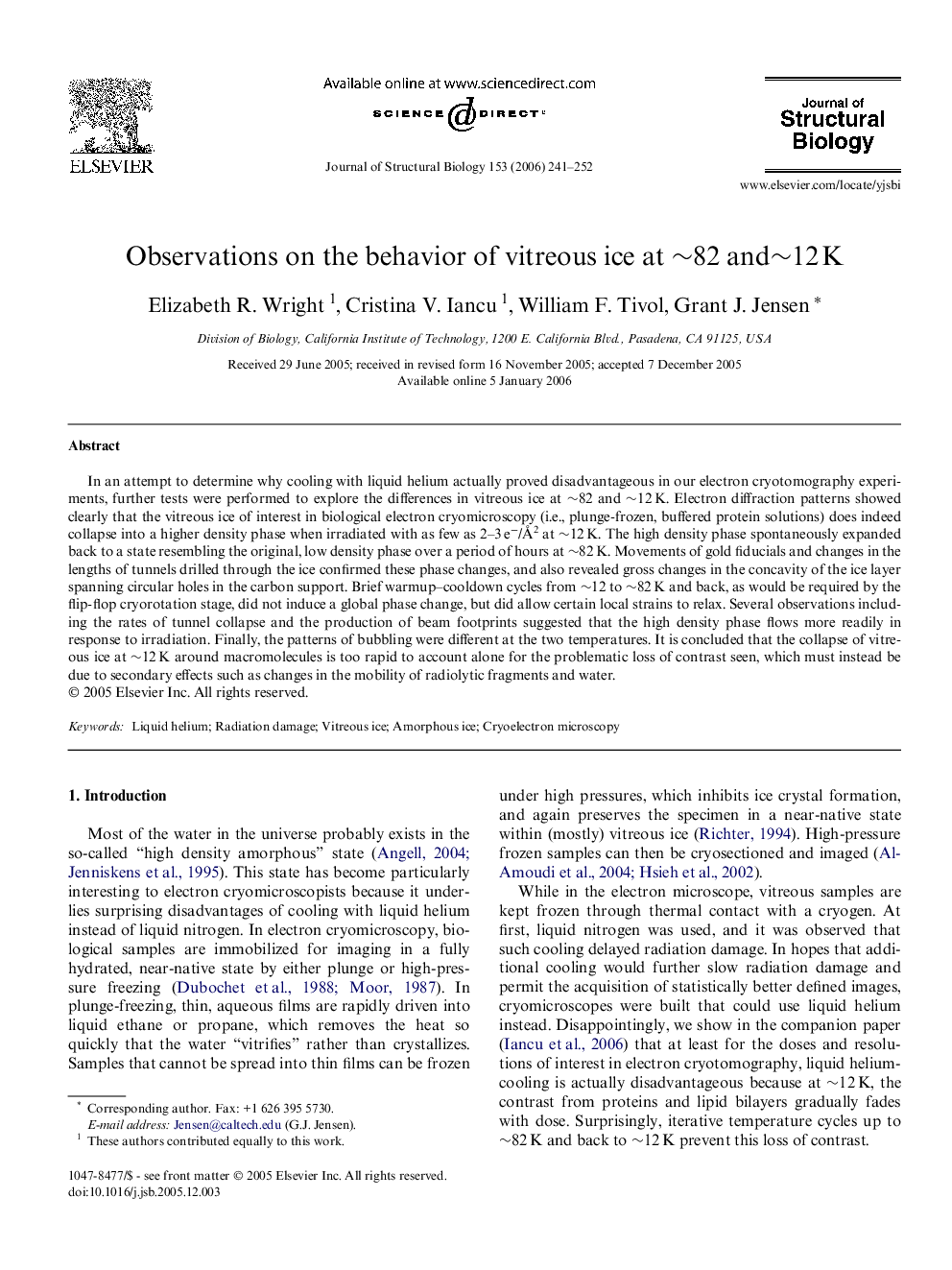| Article ID | Journal | Published Year | Pages | File Type |
|---|---|---|---|---|
| 2829685 | Journal of Structural Biology | 2006 | 12 Pages |
In an attempt to determine why cooling with liquid helium actually proved disadvantageous in our electron cryotomography experiments, further tests were performed to explore the differences in vitreous ice at ∼82 and ∼12 K. Electron diffraction patterns showed clearly that the vitreous ice of interest in biological electron cryomicroscopy (i.e., plunge-frozen, buffered protein solutions) does indeed collapse into a higher density phase when irradiated with as few as 2–3 e−/Å2 at ∼12 K. The high density phase spontaneously expanded back to a state resembling the original, low density phase over a period of hours at ∼82 K. Movements of gold fiducials and changes in the lengths of tunnels drilled through the ice confirmed these phase changes, and also revealed gross changes in the concavity of the ice layer spanning circular holes in the carbon support. Brief warmup–cooldown cycles from ∼12 to ∼82 K and back, as would be required by the flip-flop cryorotation stage, did not induce a global phase change, but did allow certain local strains to relax. Several observations including the rates of tunnel collapse and the production of beam footprints suggested that the high density phase flows more readily in response to irradiation. Finally, the patterns of bubbling were different at the two temperatures. It is concluded that the collapse of vitreous ice at ∼12 K around macromolecules is too rapid to account alone for the problematic loss of contrast seen, which must instead be due to secondary effects such as changes in the mobility of radiolytic fragments and water.
